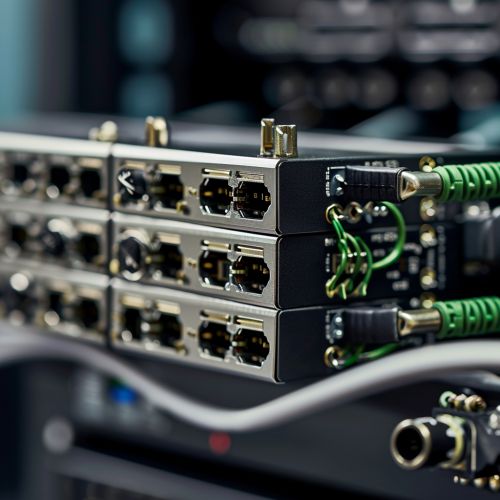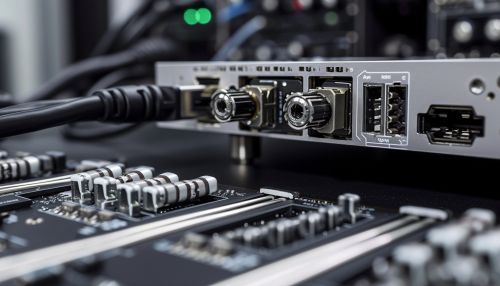Codec
Introduction
A codec is a device or software that enables compression and/or decompression for digital data. The term 'codec' is a portmanteau, a blend of the words 'coder' and 'decoder'. The process of using a codec is sometimes referred to as encoding and decoding.
History
The concept of codecs has been around since the early days of digital communication. The first codecs were hardware devices used in high-speed modems, which encoded digital data into signals that could be transmitted over analog telephone lines. In the 1980s, as personal computers became more prevalent, software-based codecs began to emerge.


Function
The primary function of a codec is to reduce the size of digital data files without significantly degrading the quality of the data. This is achieved through a process known as data compression. There are two main types of data compression used by codecs: lossless and lossy.
Lossless Compression
Lossless compression is a method of data compression in which the original data can be perfectly reconstructed from the compressed data. This is the method used when it is important that the original and the decompressed data be identical, or when no assumption can be made about whether certain insignificant data can be discarded.
Lossy Compression
Lossy compression is a method of data compression that eliminates data that is not noticeable. This is the method used in many video and audio codecs, where a certain amount of information can be lost without significantly affecting the user's perception of the content.
Types of Codecs
There are many different types of codecs, each designed for a specific type of data. Some of the most common types of codecs include audio codecs, video codecs, and image codecs.
Audio Codecs
Audio codecs are used to compress and decompress digital audio data. Examples of audio codecs include MP3, AAC, and FLAC.
Video Codecs
Video codecs are used to compress and decompress digital video data. Examples of video codecs include H.264, MPEG-4, and VP9.
Image Codecs
Image codecs are used to compress and decompress digital image data. Examples of image codecs include JPEG, PNG, and GIF.
Codec Standards
There are many different codec standards, which are sets of technical specifications for codecs. These standards are often developed by industry groups or international standards organizations, such as the International Telecommunication Union (ITU) or the Moving Picture Experts Group (MPEG).
Codec Implementations
A codec can be implemented in either hardware or software. Hardware codecs are typically faster and more efficient than software codecs, but they are also more expensive and less flexible. Software codecs, on the other hand, are cheaper and can be easily updated or modified, but they require more processing power.
